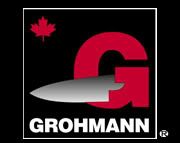John A______ and I went out to a local farm to hunt last night. This actually was more of a scouting trip. The weather was beautiful the it was pretty windy. We had a good long walk of about 2 miles around the place finding scrapes, rubs, and crossing points. There is a good acorn crop, several corn fields, and other crops on which the deer have been feeding. We didn't see a single mourning dove and only a couple of squirrels. The groundhog holes were obviously long unoccupied. I need to take my laser range finder next time.
I carried my old Bear Grizzly bow and the arrows I've been using since about 1986 with the old Bear broadheads. I like the light weight and simplicity of the recurve. A new Bear Grizzly runs about $350.00. They have now returned to the shelf type rest. I like that best, one less thing to break and it seems more traditional. I like traditional.
John brought his crossbow, I have forgotten the make, but he forgot his cocking device crank. Neither of us could cock the thing with out the aid of the cocker. I personally think that crossbows are too awkward. They weigh about the same as a firearm but also have the limbs extending left and right to get in the way. Excellent for the tree-stand hunter, they don't suit my preferred combination of ground-stand and still hunting. They are fun to shoot though. Heck, just about everything is fun to shoot.
In all our walking we didn't jump or see any deer. We did see deer come out in the middle of the field right at sunset. All that I could see I thought were does.
John is going to take his grandson, Daniel, out this weekend.
Friday, October 24, 2014
Thursday, October 23, 2014
Reloading projects continuing...
First thing for this fall/winter's reloading projects I loaded 500 .380/200 rounds. Now I'll be able to enjoy my Webley MKIV with the correct period ammo.
Second project was to load about 1000 .32 WCF cases. They are all primed now and turns out that there are 910. These should all fit in a .30 Cal ammo can and will keep the 1894CL hunting for a long time to come.
Second project was to load about 1000 .32 WCF cases. They are all primed now and turns out that there are 910. These should all fit in a .30 Cal ammo can and will keep the 1894CL hunting for a long time to come.
Tuesday, October 21, 2014
Notes from the gun shop...
Well, I don't have a lot of news about the gun shop except that we seem to be getting more .22 LR ammo and that we had some really exceptional Shiloh Sharps rifles come in on consignment, and we have some really top notch shotguns (one is a Winchester 21) for sale, and we have been busier than all get out since the move and it doesn't seem to stop.
I did help a customer put together a Barnett crossbow and installed the cranking bow cocker. That was interesting. We don't sell Barnett, we sell Parker crossbows. But, I figured it out. We can help with anything, given time!
I did help a customer put together a Barnett crossbow and installed the cranking bow cocker. That was interesting. We don't sell Barnett, we sell Parker crossbows. But, I figured it out. We can help with anything, given time!
Saturday, October 11, 2014
The Witch Trial Connections Don't End
I thought I'd found all the connections to the Salem Witch Trials of 1691-92 but I hadn't.
William Dounton, father of Thomas Flint's wife Mary, was the Salem jailer during the trials. He is our 9th great-grandfather.
Then there is Joseph Herrick (1645-1718) was constable in Salem during the period of the trials. He is our 8th great-grandfather. Henry Hericke, progenitor of most of the Herricks in America, migrated to Salem in 1629 as a member of Higginson's fleet. Joseph, Henry's 4th son, was married to Sarah, the daughter of Richard Leach, on February 7, 1667. He was referred to as Governor, which means he had probably been at in command of a military district at some point, or perhaps he had been the magistrate of a West Indies colony. His descendants were large in number, and have held many important positions.
Joseph Herrick was a soldier during King Philip's War. In 1692, at age forty-seven, he was a corporal in the village militia. He was the constable of Salem, and, as such, central to the proceedings in the witchcraft trials. At the beginning he was persuaded by the accusers; but by the end he had become a skeptic. In one of the cases, he became an advocate for an accused person, which was probably quite dangerous; and in the end he was a leader in the opposition movement. His parents are mentioned in a court record to have been fined "for aiding and comforting an excommunicated person, contrary to order."
Joseph had brothers Ephraim, Zachariah, Henry, and George (who was constable of Essex county). Ephraim had a son John (1662-1729). John Herrick's wife Bethia Solart was Sarah Good's sister. Sarah Good was one of the executed witches. Her full name was Sarah Solart Poole Good.
11th Great-grandfather Samuel Appleton (1586-1670) had a son (our 10th grand-uncle), also Samuel (1626-1696) who was a Major (later Colonel) in the militia and a member of the Court of Assistants which tried the first accused but he had no part in the Comission of Oyer and Terminer which condemned so many and he had no further involvement with the whole sad episode.
Mary Leach Ireson was an 8th great-grand aunt, daughter of Richard & Sarah Ann Fuller Leach 9th great-grandparents. Mary Ireson became involved in the Salem witch trials when a complaint was sworn out against her on 4 June 1692 by Edward Putnam and Thomas Rayment, alleging that Mary had afflicted Mary Warren, Susanna Sheldon and Mary Walcott. She was arrested and examined on 6th June. As soon as she entered the room, several of the "afflicted girls" fell into fits. Susanna Sheldon testified that Mary's specter had brought her the Devil's book and if she didn't sign it would tear her throat out. No further information is known beyond the initial examination.
Apparently there are a number of reports of 9th great-grandfather Francis Wyman of Woburn and Billerica testifying in the trials but it seems he has been confused with Francis Wycombe, a woman, who testified in the trial of Margaret Scott. There is no other mention of Francis or his immediate family of which I am aware at this time.
No doubt there will be more connections discovered as I continue my research and I'll note them here.
William Dounton, father of Thomas Flint's wife Mary, was the Salem jailer during the trials. He is our 9th great-grandfather.
Then there is Joseph Herrick (1645-1718) was constable in Salem during the period of the trials. He is our 8th great-grandfather. Henry Hericke, progenitor of most of the Herricks in America, migrated to Salem in 1629 as a member of Higginson's fleet. Joseph, Henry's 4th son, was married to Sarah, the daughter of Richard Leach, on February 7, 1667. He was referred to as Governor, which means he had probably been at in command of a military district at some point, or perhaps he had been the magistrate of a West Indies colony. His descendants were large in number, and have held many important positions.
Joseph Herrick was a soldier during King Philip's War. In 1692, at age forty-seven, he was a corporal in the village militia. He was the constable of Salem, and, as such, central to the proceedings in the witchcraft trials. At the beginning he was persuaded by the accusers; but by the end he had become a skeptic. In one of the cases, he became an advocate for an accused person, which was probably quite dangerous; and in the end he was a leader in the opposition movement. His parents are mentioned in a court record to have been fined "for aiding and comforting an excommunicated person, contrary to order."
Joseph had brothers Ephraim, Zachariah, Henry, and George (who was constable of Essex county). Ephraim had a son John (1662-1729). John Herrick's wife Bethia Solart was Sarah Good's sister. Sarah Good was one of the executed witches. Her full name was Sarah Solart Poole Good.
11th Great-grandfather Samuel Appleton (1586-1670) had a son (our 10th grand-uncle), also Samuel (1626-1696) who was a Major (later Colonel) in the militia and a member of the Court of Assistants which tried the first accused but he had no part in the Comission of Oyer and Terminer which condemned so many and he had no further involvement with the whole sad episode.
Mary Leach Ireson was an 8th great-grand aunt, daughter of Richard & Sarah Ann Fuller Leach 9th great-grandparents. Mary Ireson became involved in the Salem witch trials when a complaint was sworn out against her on 4 June 1692 by Edward Putnam and Thomas Rayment, alleging that Mary had afflicted Mary Warren, Susanna Sheldon and Mary Walcott. She was arrested and examined on 6th June. As soon as she entered the room, several of the "afflicted girls" fell into fits. Susanna Sheldon testified that Mary's specter had brought her the Devil's book and if she didn't sign it would tear her throat out. No further information is known beyond the initial examination.
Apparently there are a number of reports of 9th great-grandfather Francis Wyman of Woburn and Billerica testifying in the trials but it seems he has been confused with Francis Wycombe, a woman, who testified in the trial of Margaret Scott. There is no other mention of Francis or his immediate family of which I am aware at this time.
No doubt there will be more connections discovered as I continue my research and I'll note them here.
Tuesday, October 07, 2014
More "Witches" in the Family
Lydia (MNU) Dustin/Dastin (1626?-1693) - Accused as a witch during the Salem hysteria, Lydia was found not guilty, but, died in prison before she could be released. Thought to have been born about 1626, little is known of Lydia Dustin, but, at the time that she was arrested she was a widow, her husband, Josiah, having died in 1671. Though her husband had been one of the founders and leading land owners of Reading, a complaint was filed by Captain Jonathan Walcott and Thomas Putnam alleging that she had afflicted Mary Walcott, Ann Putnam, Mercy Lewis, and Abigail Williams. She was arrested in Reading, Massachusetts on April 30, 1892, and examined on May 2nd by magistrates Jonathan Corwin and John Hathorne. She was then sent to Boston's jail. Later, her daughters, Sarah Dustin and Mary Colson were also arrested. Though a warrant was issued for her granddaughter, Elizabeth Colson, she had fled and couldn't be found. It is unknown why Lydia was not immediately tried; but, she remained in prison throughout the year. Both Lydia and her daughter, Sarah, were later found not guilty by the Superior Court of Judicature in January, 1693. However, they could not be released until they paid jail fees. Unable to pay the fees, Lydia died in jail on March 10, 1693.
Lydia is my 9th great-grandmother on the Flint side of the family. Her daughters, Mary is my 8th great-grandmother, were also accused.
Mary Dustin Colson (1650-??) - Accused of witchcraft, Mary Colson was the last in her family to be examined. Her mother, Lydia Dustin and sister, Sarah Dustin, were both sitting in jail awaiting trials. An arrest warrant had been issued for her daughter Elizabeth Colson, who had escaped. Mary was brought in and examined before the justices on September 5, 1692. She was accused of afflicting Mary Swayne Marshall, who would say that Mary Colson had afflicted her ever since her mother, Lydia Dustin had been imprisoned. She was also accused by Elizabeth Booth and Alice Booth and it was insinuated that she may have had a hand in the deaths of William Hooper and Ed Marshal. Mary Colson was one of the lucky ones. Though she was accused, she was not indicted and was later released. Nothing more is known of her.
Sarah Dustin/Dastin - The unmarried daughter of Lydia Dustin, Sarah was arrested shortly after her mother. Her father was Joshia Dustin, who had been one of the founders and leading land owners of Reading, Massachusetts. She was arrested for witchcraft shortly after her mother (who was arrested on April 30, 1892). She was accused of afflicting Elizabeth Weston, the daughter of John Weston of Reading. Neither Sarah or her mother were immediately tried, and both remained in prison throughout the year. In January, 1693, they were found not guilty. Her mother died in jail, unable to pay the prison fees. However, Sarah, must have found a way to pay and was released. Nothing more is known of her.
Elizabeth Colson was Mary's daughter. Elizabeth Colson of Reading (Redding), was accused by spectral evidence; her specter supposedly visited "Mary Walcott Mercy Lewis and others," according to the May 14 arrest warrant signed by John Hathorne and Jonathan Corwin. She was accused by Malden resident Mary Swayne Marshall and charged with witchcraft against Susannah Sheldon. But a May 16 statement by Redding constable John Parker stated that Elizabeth Colson had escaped and was likely in Boston preparing to leave the country. Two more warrants were issued, the last on September 10; sources disagree as to whether she was ever captured.
Then there was John Durrant. John is my 5th great-grandfather in the Thayer branch of the family. John Durrant (1650-1692) - Though no legal documents remain for Mr. Durrant, he was known to have lived in Billerica at the time of the witchcraft trials and died in the Cambridge prison on October 27, 1692. On November 16, 1670, John Durrant married his neighbor, Susanna Dutton, the daughter of Thomas Dutton. Just months after his wife, Susannah, died on August 27, 1684, he married a widow named Ruth Hooper on November 10, 1684. Ruth's step-daughter was Sarah Hooper Hawkes Wardwell, of Andover, who was accused of witchcraft in August, 1692. Sarah's husband was Samuel Wardwell, Sr., who was hanged for witchcraft on September 22, 1692. Sarah and Samuel's daughter, Mercy Wardwell was also accused of witchcraft. Because of the timing and family ties to other alleged "witches", historians believe that John Durrant was imprisoned for the charge of witchcraft.
Lydia is my 9th great-grandmother on the Flint side of the family. Her daughters, Mary is my 8th great-grandmother, were also accused.
Mary Dustin Colson (1650-??) - Accused of witchcraft, Mary Colson was the last in her family to be examined. Her mother, Lydia Dustin and sister, Sarah Dustin, were both sitting in jail awaiting trials. An arrest warrant had been issued for her daughter Elizabeth Colson, who had escaped. Mary was brought in and examined before the justices on September 5, 1692. She was accused of afflicting Mary Swayne Marshall, who would say that Mary Colson had afflicted her ever since her mother, Lydia Dustin had been imprisoned. She was also accused by Elizabeth Booth and Alice Booth and it was insinuated that she may have had a hand in the deaths of William Hooper and Ed Marshal. Mary Colson was one of the lucky ones. Though she was accused, she was not indicted and was later released. Nothing more is known of her.
Sarah Dustin/Dastin - The unmarried daughter of Lydia Dustin, Sarah was arrested shortly after her mother. Her father was Joshia Dustin, who had been one of the founders and leading land owners of Reading, Massachusetts. She was arrested for witchcraft shortly after her mother (who was arrested on April 30, 1892). She was accused of afflicting Elizabeth Weston, the daughter of John Weston of Reading. Neither Sarah or her mother were immediately tried, and both remained in prison throughout the year. In January, 1693, they were found not guilty. Her mother died in jail, unable to pay the prison fees. However, Sarah, must have found a way to pay and was released. Nothing more is known of her.
Elizabeth Colson was Mary's daughter. Elizabeth Colson of Reading (Redding), was accused by spectral evidence; her specter supposedly visited "Mary Walcott Mercy Lewis and others," according to the May 14 arrest warrant signed by John Hathorne and Jonathan Corwin. She was accused by Malden resident Mary Swayne Marshall and charged with witchcraft against Susannah Sheldon. But a May 16 statement by Redding constable John Parker stated that Elizabeth Colson had escaped and was likely in Boston preparing to leave the country. Two more warrants were issued, the last on September 10; sources disagree as to whether she was ever captured.
Then there was John Durrant. John is my 5th great-grandfather in the Thayer branch of the family. John Durrant (1650-1692) - Though no legal documents remain for Mr. Durrant, he was known to have lived in Billerica at the time of the witchcraft trials and died in the Cambridge prison on October 27, 1692. On November 16, 1670, John Durrant married his neighbor, Susanna Dutton, the daughter of Thomas Dutton. Just months after his wife, Susannah, died on August 27, 1684, he married a widow named Ruth Hooper on November 10, 1684. Ruth's step-daughter was Sarah Hooper Hawkes Wardwell, of Andover, who was accused of witchcraft in August, 1692. Sarah's husband was Samuel Wardwell, Sr., who was hanged for witchcraft on September 22, 1692. Sarah and Samuel's daughter, Mercy Wardwell was also accused of witchcraft. Because of the timing and family ties to other alleged "witches", historians believe that John Durrant was imprisoned for the charge of witchcraft.
Thursday, October 02, 2014
Mary Gye - 10x Great-Grandmother
Mary Gye is an interesting woman. She is one of my 10th great-grandmothers, an ancestor of several famous Americans (and at least one President) and descendent of European Royalty. At first I doubted that last as I do not yet know who has done the research, how careful they were, whether or not there was some hidden agenda in finding the various ancestral links, or what the researchers' sources are/were. However, just for the sake of argument, let's go with it and accept that multiple people believe that she was indeed (as were her brothers and sisters) descended from royalty/rulers going back to before 677 or more than 1300 years. As follows:
and also she is supposed to be descended from Henry III thusly:
It isn't all that much to get excited about. Reportedly, 20% of western Europeans are descended from Charlemagne. That's one of every 5. It is far less likely that I would be a Mayflower descendant even though, of the current US population approximately 2.5 million are Mayflower descendants. What we also see with Mary is a willingness, at that time, for some rather older people to make the trip from England to the New World for any number of reasons, with any sort of background despite the dangers of the trip and once one was living here.
Mary's husband, the Reverend John Maverick was born to Rev. Peter Maverick, a vicar in Awliscombe, Devon in 1578. In 1595, Maverick enrolled in University of Oxford. Five years later, in 1600, he married Mary Gye. Two of their sons, Samuel and Moses, are notable people in early Massachusetts history. In 1603, Maverick received his MA from Oxford. He was the curate for his uncle, Rev. Radford Maverick, from 1606-1614 (Radford was Mary's guardian after the death of her mother and arranged for John and Mary's marriage). Afterwards, he was rector of a church in Beaworthy, Devon until 1629.
Maverick became a Puritan before migrating to the Massachusetts Bay Colony at Dorchester, Massachusetts on 30 May 1630, where he served as the first minister of the First Parish Church of Dorchester with Rev. John Warham. He became a freeman in 1631 and helped establish the government in Dorchester. He died February 3, 1636. His eulogy was by Cotton Mather and Governor John Winthrop (12 Jan 1587 26 Mar 1649, a wealthy English Puritan lawyer, and one of the leading figures in the founding of the Massachusetts Bay Colony) who said, “...near sixty, a man of very humble spirit and faithful in furthering the work of the Lord here, both in church and in civil state.” The Maverick family was one of prominence in colonial days, and noted for hospitality, religious tolerance, and active philanthropy.
We are descended from their son Elias.
Warinus Count; brother to Saint Léger, Bishop of Autun ( - 677)
Saint Liéven Bishop of Trèves 685-704 ( - 713) son of Warinus Count; brother to Saint Léger, Bishop of Autun
Routrou de Trèves daughter of Saint Liéven Bishop of Trèves 685-704
Pepin "The Short" (714 - 768) son of Routrou
Charlemagne King of France, 768-814; Holy Roman Emperor (747 - 813) son of Pepin "The Short"
Pepin King of Italy, 781-810; Consecrated King of Lombardy on 15 April 781) ( - 810) son of Charlemagne King of France, 768-814; Holy Roman Emperor
Bernard King of Italy, 813-December 817 (797 - 818) son of Pepin King of Italy, 781-810; Consecrated King of Lombardy on 15 April 781)
Pepin Count of Senlis,Peronne & St. Quentin (817 - 840) son of Bernard King of Italy, 813-December 817
Herbert I de Vermandois Count de Vermandois; Seigneur of Senlis, Peronne & St. Quentin (840 - 902) son of Pepin Count of Senlis,Peronne & St. Quentin
Herbert II de Vermandois Count de Vermandois & Troyes (890 - 943) son of Herbert I de Vermandois Count de Vermandois; Seigneur of Senlis, Peronne & St. Quentin
Albert I "The Pious" Count de Vermandois (920 - 987) son of Herbert II de Vermandois Count de Vermandois & Troyes
Herbert III, Count de Vermandois (955 - 1000) son of Albert I "The Pious" Count de Vermandois
Otho/Eudes/Otto Count de Vermandois (1000 - 1045) son of Herbert III, Count de Vermandois
Herbert IV, Count de Vermandois (1032 - 1080) son of Otho/Eudes/Otto Count de Vermandois
Adelaide de Vermandois Countess of Vermandois & Valois ( - 1120) daughter of Herbert IV, Count de Vermandois
Isabel de Vermandois Countess of Leicester ( - 1131) daughter of Adelaide de Vermandois Countess of Vermandois & Valois
Waleran de Beaumont Count de Meulan; Earl of Worcester (1104 - 1166) son of Isabel de Vermandois Countess of Leicester
Robert de Beaumont Sir, Count de Meulan ( - 1207) son of Waleran de Beaumont Count de Meulan; Earl of Worcester
Maud/Mabel/Mabirie de Beaumont daughter of Robert de Beaumont Sir, Count de Meulan
Mary Riverson de Vernon daughter of Maud/Mabel/Mabirie de Beaumont
William Prowse son of Mary Riverson de Vernon
William Prowse son of William Prowse
William Prowse son of William Prowse
William Prowse Sir ( - 1270) son of William Prowse
William Prowse Sir (1245 - 1316) son of William Prowse Sir
William Prowse son of William Prowse Sir
John Prowse son of William Prowse
Roger Prowse son of John Prowse
Nicholas Prowse son of Roger Prowse
Thomas Prowse son of Nicholas Prowse
Mary Prowse daughter of Thomas Prowse
Robert Gye (1540 - 1605) son of Mary Prowse
Mary Gye (1580 - 1666) daughter of Robert Gye
and also she is supposed to be descended from Henry III thusly:
Henry Plantagenet III, King of England
Edmund Plantagenet 1st Earl of Lancaster son of Henry Plantagenet III, King of England
Henry Plantagenet 3rd Earl of Lancaster son of Edmund Plantagenet 1st Earl of Lancaster
Eleanor Plantagenet daughter of Henry Plantagenet 3rd Earl of Lancaster
John FitzAlan 1st Baron Arundel son of Eleanor Plantagenet
Joan FitzAlan daughter of John FitzAlan 1st Baron Arundel
Joan Echyngham daughter of Joan FitzAlan
Henry Baynton son of Joan Echyngham
Joan Baynton daughter of Henry Baynton
Mary Prowse daughter of Joan Baynton
Robert Gye (1540 - 1605) son of Mary Prowse
Mary Gye (1580 - 1666) daughter of Robert Gye
It isn't all that much to get excited about. Reportedly, 20% of western Europeans are descended from Charlemagne. That's one of every 5. It is far less likely that I would be a Mayflower descendant even though, of the current US population approximately 2.5 million are Mayflower descendants. What we also see with Mary is a willingness, at that time, for some rather older people to make the trip from England to the New World for any number of reasons, with any sort of background despite the dangers of the trip and once one was living here.
Mary's husband, the Reverend John Maverick was born to Rev. Peter Maverick, a vicar in Awliscombe, Devon in 1578. In 1595, Maverick enrolled in University of Oxford. Five years later, in 1600, he married Mary Gye. Two of their sons, Samuel and Moses, are notable people in early Massachusetts history. In 1603, Maverick received his MA from Oxford. He was the curate for his uncle, Rev. Radford Maverick, from 1606-1614 (Radford was Mary's guardian after the death of her mother and arranged for John and Mary's marriage). Afterwards, he was rector of a church in Beaworthy, Devon until 1629.
Maverick became a Puritan before migrating to the Massachusetts Bay Colony at Dorchester, Massachusetts on 30 May 1630, where he served as the first minister of the First Parish Church of Dorchester with Rev. John Warham. He became a freeman in 1631 and helped establish the government in Dorchester. He died February 3, 1636. His eulogy was by Cotton Mather and Governor John Winthrop (12 Jan 1587 26 Mar 1649, a wealthy English Puritan lawyer, and one of the leading figures in the founding of the Massachusetts Bay Colony) who said, “...near sixty, a man of very humble spirit and faithful in furthering the work of the Lord here, both in church and in civil state.” The Maverick family was one of prominence in colonial days, and noted for hospitality, religious tolerance, and active philanthropy.
We are descended from their son Elias.
Subscribe to:
Comments (Atom)





















